13 COVERS AND PAGES: A BIRTHDAY TRIBUTE to the late artist, who was born 95 years ago…
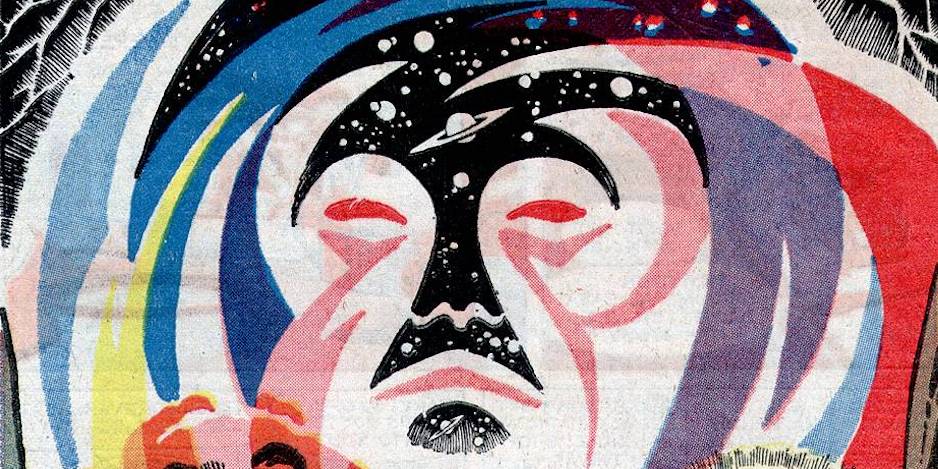
By PETER BOSCH
I promise this article is about the late Russ Manning, who was born 95 years ago, on January 5, 1929. I just ask that you stick with it for a bit.
The date was late November 1962, and the time was when the Marvel Age of Comics was just a-dawning. Fantastic Four was barely a year old. The Incredible Hulk saw the light of day only eight months prior, and Spider-Man and Thor had not even cleared the half-year mark yet. However, over at Western Printing & Lithographing Company (aka “Western Publishing”), the foundation for a new comic book empire was already being laid.
For decades, Western had produced all elements of the majority of comics published under the Dell banner. This included writing, drawing, and printing the funny animal titles from Disney, MGM, Warner Bros., and other studios, as well as comic book adaptations of live-action television series and motion pictures.
Dell itself was a separate company and provided the money and distribution for this…but they wanted a better financial deal for themselves, including raising the price of their comics from 10 cents to 15 cents, a 50% jump which many comic book fans refused to go along with. This was a major mistake on Dell’s part and Western ended up walking away – taking with them the most important business requirement of all: the licensing agreements. By mid-1962, Western was publishing the comic book titles under their own brand, Gold Key. And they would also create original characters, one of which would be Magnus, Robot Fighter.
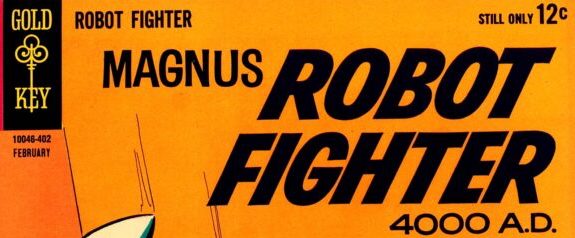
Magnus was different from the Marvel and DC galaxy of heroes. Magnus did not put on a mask and cape to fight crime. He was just Magnus, a human orphan trained from childhood by 1A, a robot, to help defend humankind from the growing rise of evil metal men that were supposed to help people, not subjugate them. Magnus’ training consisted of karate skills that made the young man’s hands so hard he could destroy even the solid metal of his opponents. Joining in his revolt was Leeja, the beautiful and rebellious daughter of Senator Clane, who also saw the danger of the robots’ tyrannical overthrow when they took over the police department.
The concept for the comic book series actually lay with Chase Craig, the West Coast editor of Gold Key comic books. He had pitched the basic idea to the powers-that-be and was given the greenlight, at which time he looked for a writer and an illustrator to develop it further. He got them both in Russ Manning.
Manning had been drawing various comics for Western Publishing for a decade and he heard he was being considered to draw the new series. A great fan of science-fiction tales since his youth, he rushed to discuss it with Craig. Manning then took the idea and developed it from a plot to a full script, at first as a Tarzan-like character set in 4000 AD, and came up with the look of the series. The final product, however, came through a melding of suggestions, including the single greatest aspect — Manning’s wife, Dodie, said Magnus should karate chop his metallic foes. The comic book series debuted November 29, 1962 (with a cover date of February 1963) and it turned out to be a major hit.
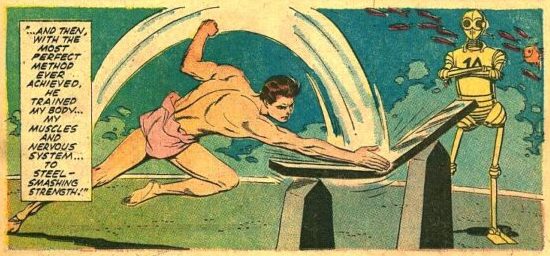
The Manning-illustrated comic was one of the finest-drawn series of all — and, if that were not enough, he also drew the comic’s backup strip, “The Aliens,” about humans in space encountering and teaming up with an extraterrestrial race.
Manning’s work on Magnus ran though Issue #21 (Feb. 1968), followed by a reprint of the first issue in #22 (but with a new Manning-drawn chapter of “The Aliens”). Several issues of stories of Magnus and the Aliens followed, by a new group of artists and writers, and then reprints took their place through the final issue, #46 (Jan. 1977).
Here are 13 examples of Russ Manning’s incredible artwork on both “Magnus, Robot Fighter” and “The Aliens”:
(Script, pencils and inks below are all by Manning unless otherwise indicated.)
—
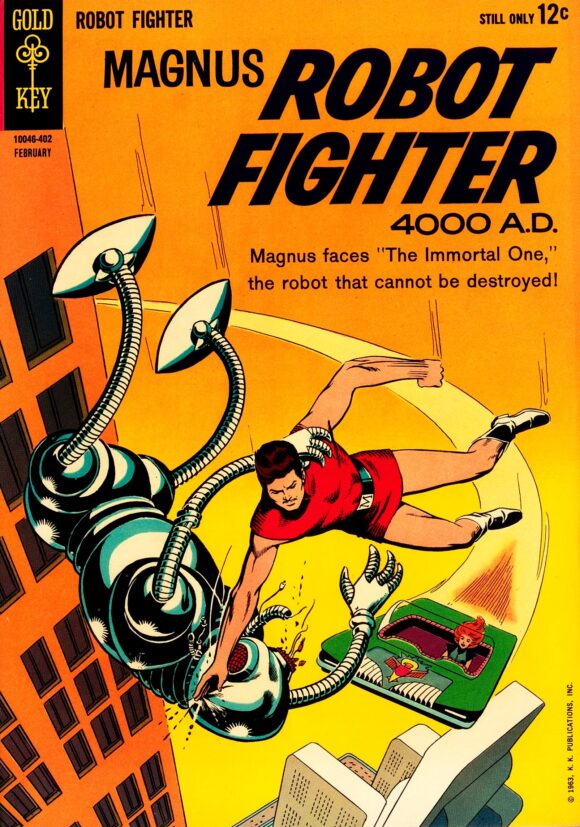
Magnus, Robot Fighter #5 (Feb. 1964)
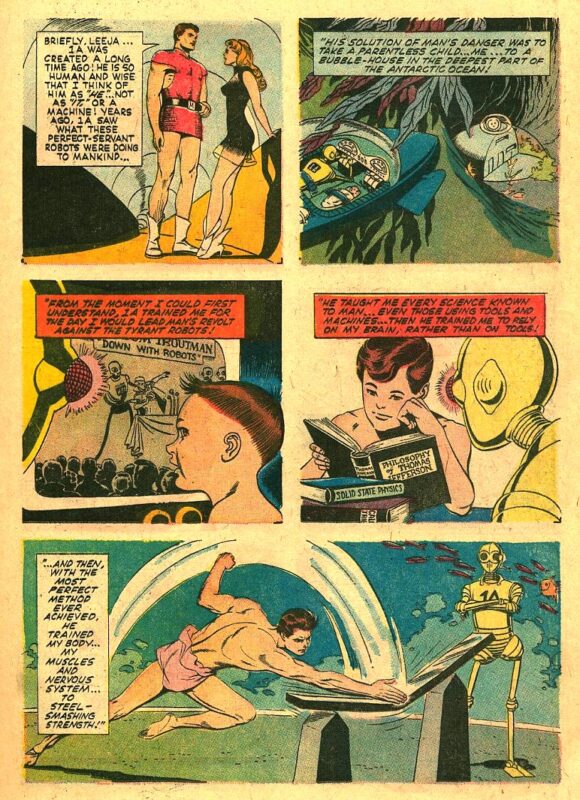
Magnus, Robot Fighter #1 (Feb. 1963): Origin of Magnus
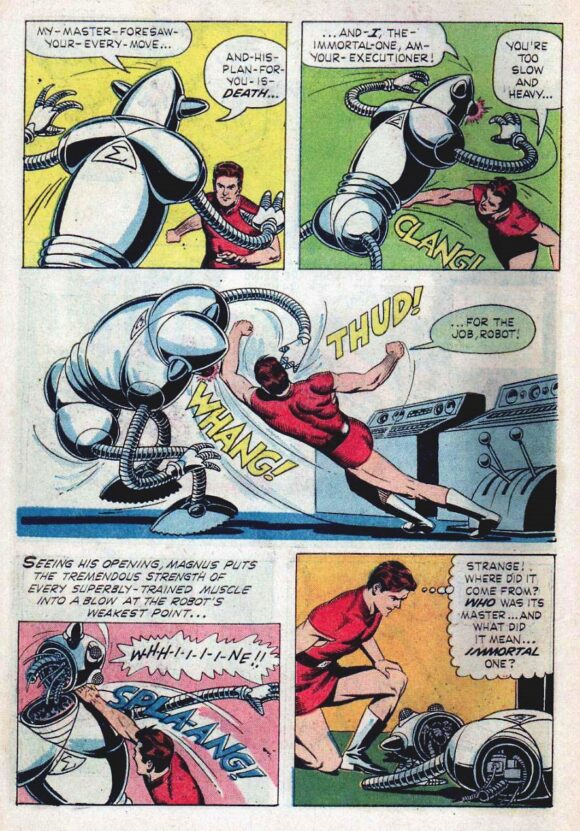
Magnus, Robot Fighter #5 (Feb. 1964)
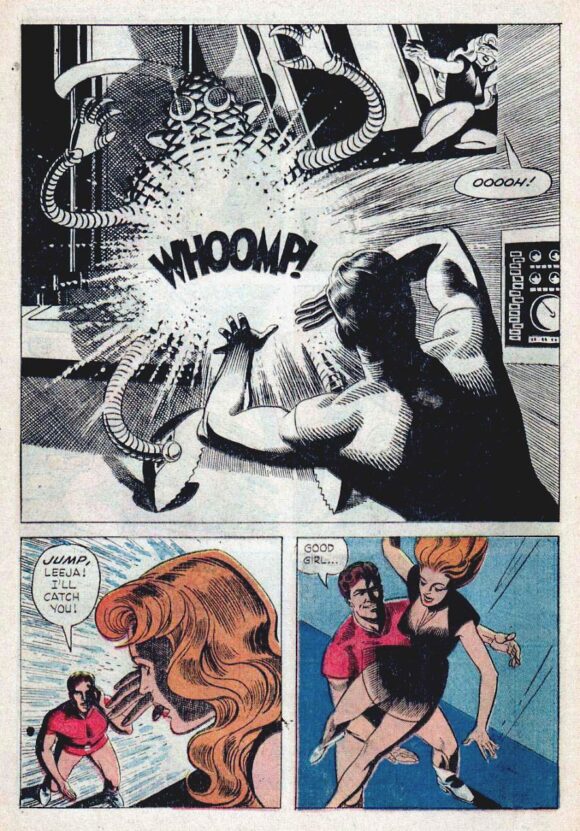
Magnus, Robot Fighter #5 (Feb. 1964)
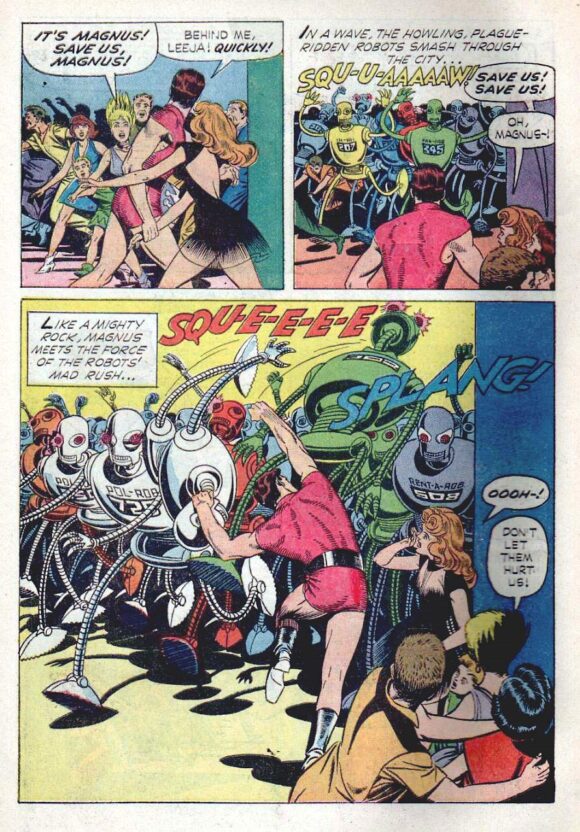
Magnus, Robot Fighter #7 (Aug. 1964)
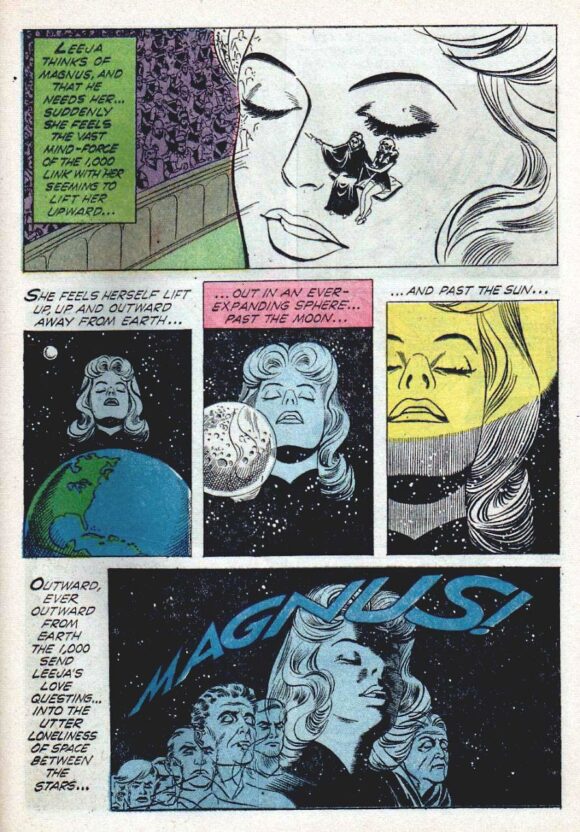
Magnus, Robot Fighter #7 (Aug. 1964)
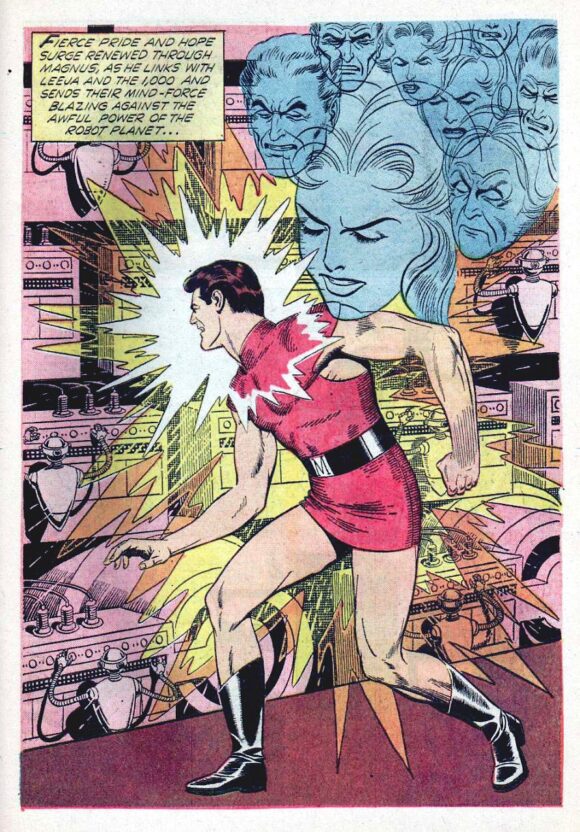
Magnus, Robot Fighter #7 (Aug. 1964)
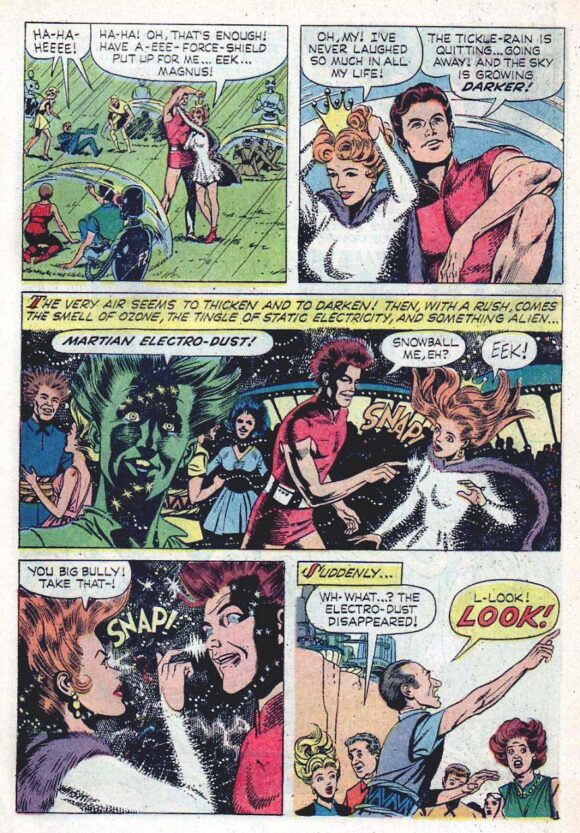
Magnus, Robot Fighter #8 (Nov. 1964)
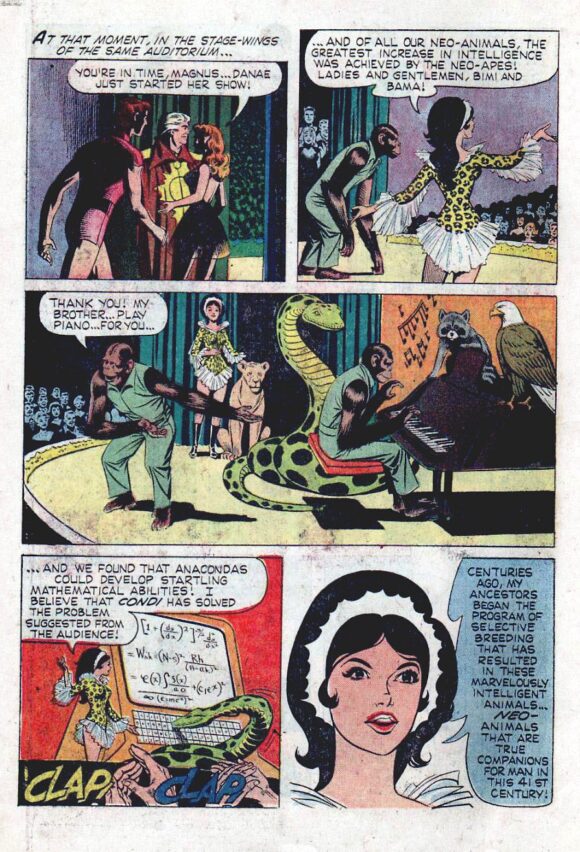
Magnus, Robot Fighter #11 (Aug. 1965)
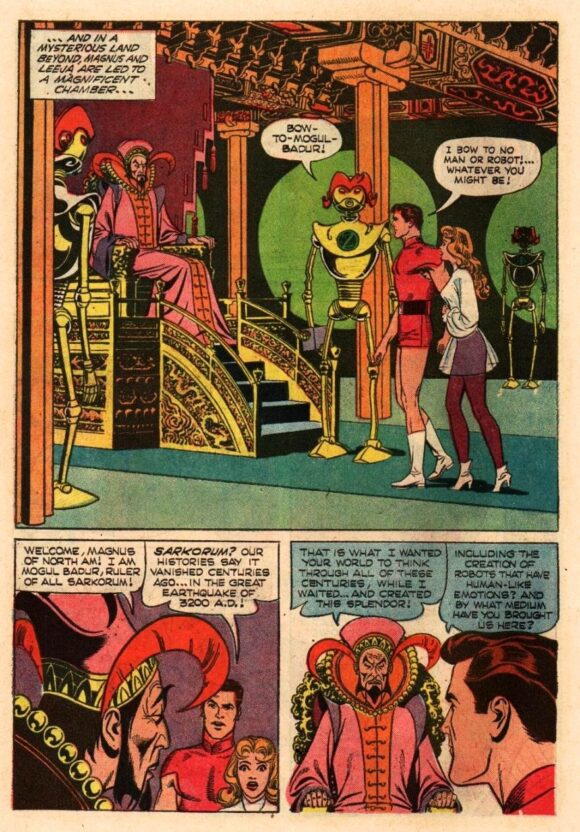
Magnus, Robot Fighter #15 (Aug. 1966): Script, Herbert Kastle
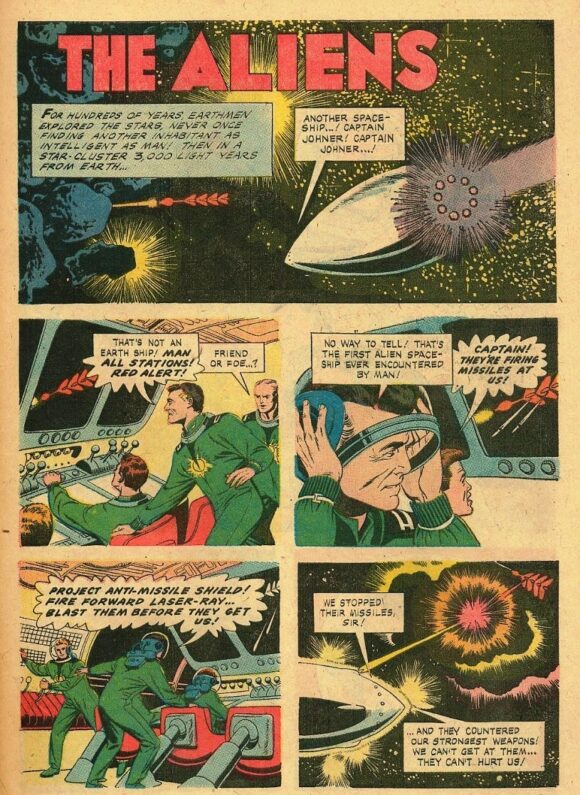
Magnus, Robot Fighter #1 (Feb. 1963): First “The Aliens”
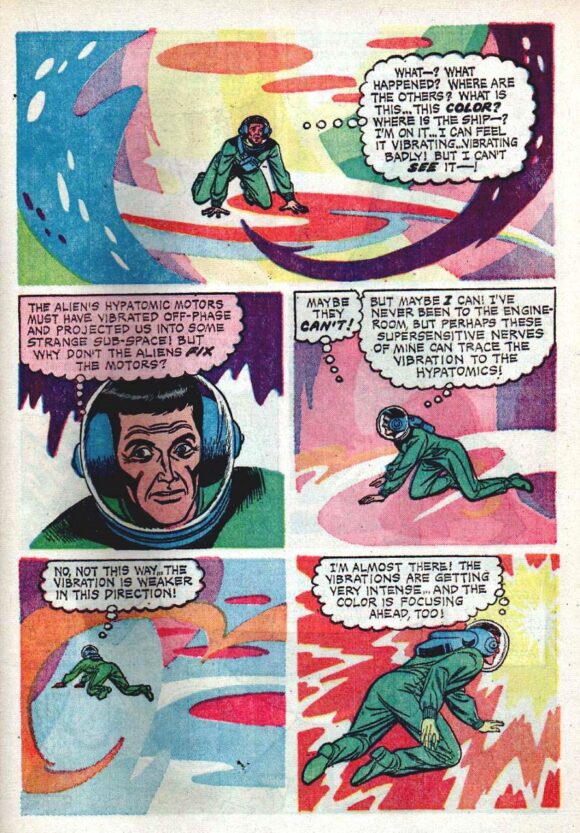
Magnus, Robot Fighter #6 (May 1964): Manning’s superb use of colors was a special part of “The Aliens”
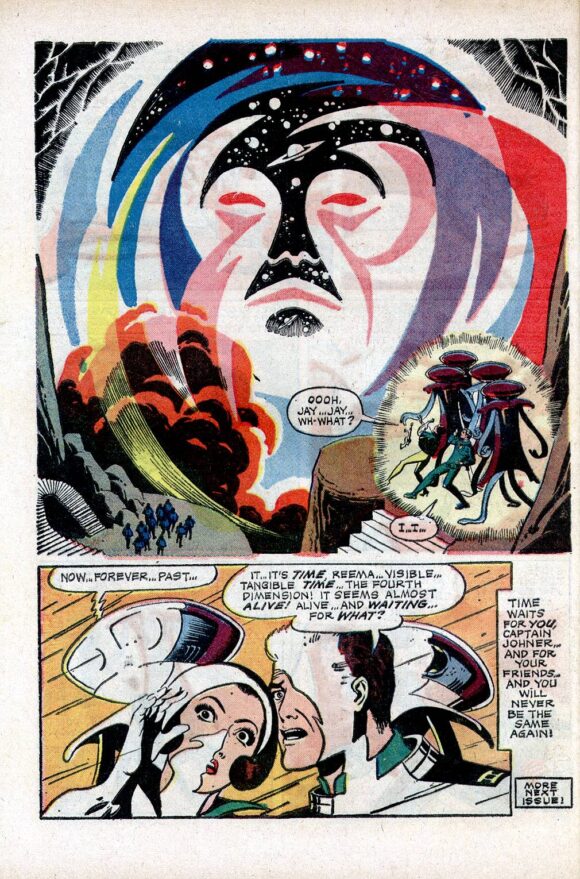
Magnus, Robot Fighter #20 (Nov. 1967): Another extraordinary color page of “The Aliens”
—
MORE
— 13 GREAT ILLUSTRATIONS: The TARZAN OF RUSS MANNING. Click here.
— STAR WARS: A RUSS MANNING Birthday Celebration. Click here.
—
13th Dimension contributor-at-large PETER BOSCH’s first book, American TV Comic Books: 1940s-1980s – From the Small Screen to the Printed Page, was published by TwoMorrows. He is currently at work on a sequel, about movie comics. Peter has written articles and conducted celebrity interviews for various magazines and newspapers. He lives in Hollywood.
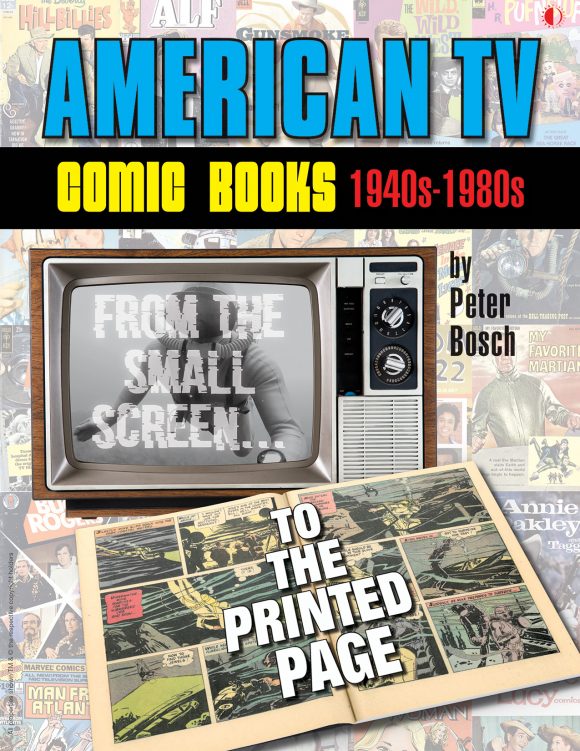

January 5, 2024
Such great stuff. You can see how much Manning influenced Steve Rude.
January 5, 2024
Magnus #5 & #7. Oh, that dress on Leeja! How did they get away with that?! (I love it!)